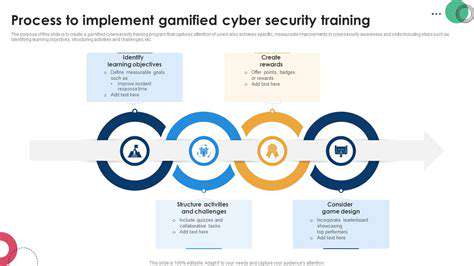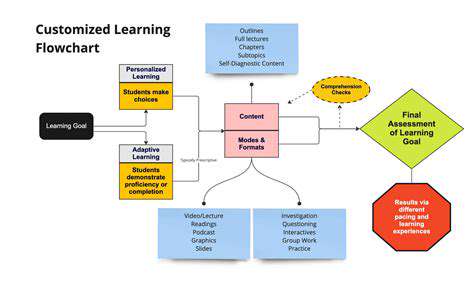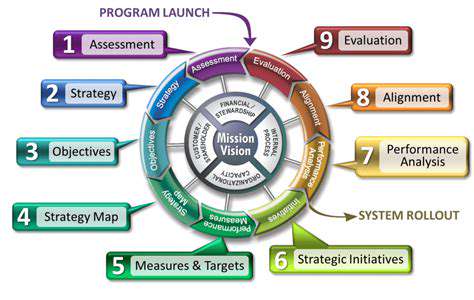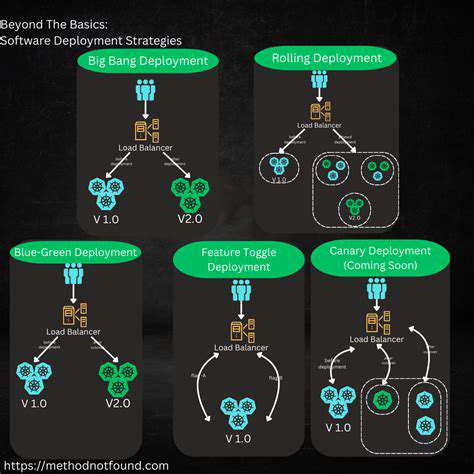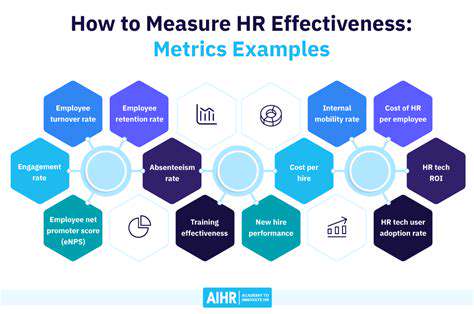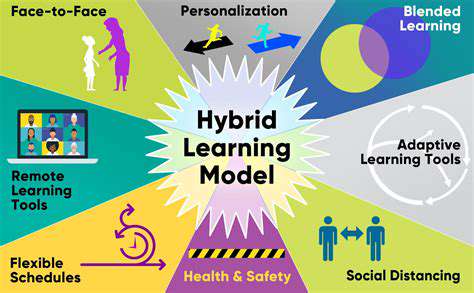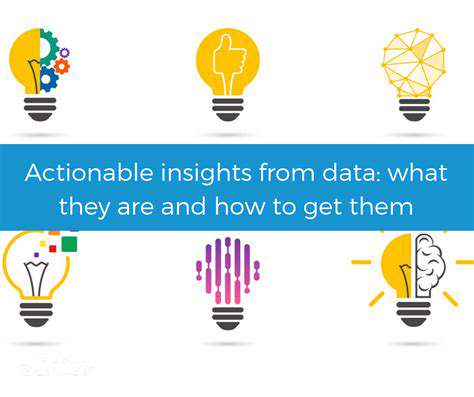Performance Max: A Deep Dive into Google's Automation
Beyond the Basics: Optimizing Your Performance Max Campaigns
Understanding the Core Principles of Performance Max
Performance Max campaigns leverage machine learning to automatically optimize your ad spend and reach across various Google channels. Instead of manually crafting individual campaigns for Search, Display, and Video, you provide a single campaign budget and target audience, letting Google's algorithm work its magic. This approach can significantly improve efficiency and potentially broaden your reach compared to traditional campaigns, especially if you're targeting a diverse customer base across different platforms.
Knowing the core principles behind this automation is key to success. Understanding how Google's AI prioritizes different ad types and formats is essential to ensuring your campaign aligns with your business goals. This approach allows you to focus on higher-level strategies, freeing up time and resources.
Defining Your Objectives and Target Audience
Before diving into the setup, you need a clear understanding of your business objectives. Are you looking to drive website traffic, generate leads, or increase sales? Performance Max allows you to set granular goals, and Google's AI will try to optimize toward those specific targets. This means that defining a clear and measurable goal is critical to the success of the campaign.
Equally important is defining your ideal customer. Providing detailed information about your target audience—their demographics, interests, behaviors, and needs—allows Google's algorithm to tailor your ads to the right people at the right time. Precise targeting ensures your message reaches the most relevant customers, maximizing your ROI.
Mastering Asset Optimization
Performance Max relies heavily on assets. High-quality images, engaging videos, and compelling text are crucial for capturing attention. Beyond simply uploading assets, optimizing their format and size for different channels is essential for maximizing visibility and engagement. Consider the visual differences between mobile and desktop displays and tailor your assets accordingly.
This involves thoughtful selection of visuals and descriptions that resonate with your target audience. The more relevant and compelling your assets, the better the AI can understand your message and target the right people.
Strategic Budget Allocation and Bidding Strategies
Understanding how to allocate your budget effectively is vital. Performance Max allows you to set a total budget for the campaign, but the AI will dynamically distribute funds across various channels based on performance. Experiment with different budget strategies to optimize spending and maximize ROI, adapting to changing performance trends.
Monitoring and Analyzing Performance Metrics
Performance Max provides detailed insights into campaign performance. Regularly monitoring metrics like impressions, clicks, conversions, and cost-per-acquisition is essential to understand what's working and what's not. This allows for adjustments and optimizations in real-time, ensuring your campaign stays on track with your objectives.
Learning to interpret these reports and identify areas for improvement is a key aspect of optimizing your Performance Max campaigns. It's not just about seeing the numbers, but understanding the underlying trends.
Leveraging Conversion Tracking and Enhancements
Conversion tracking is fundamental to evaluating the success of your Performance Max campaign. Ensure you have robust conversion tracking in place to accurately measure the impact of your ads on your desired outcomes. This data is essential for making informed decisions about budget allocation and campaign adjustments. Conversion tracking allows for a deeper understanding of how your ads translate into tangible results.
Staying Updated with Google's Best Practices
Google frequently updates its Performance Max features and best practices. Staying informed about these changes and new tools is crucial for maximizing your campaign's performance. Regularly reviewing Google's support documentation and attending webinars can provide valuable insights and strategies to enhance your campaign's effectiveness.
Keeping up-to-date with industry trends and best practices in digital marketing is also important for effectively optimizing Performance Max campaigns. Learning from others' experiences and adapting your approach accordingly can significantly improve campaign results.
Establishing digital-free zones is a crucial step in fostering a more mindful and productive lifestyle. These zones offer a sanctuary from the constant barrage of notifications and distractions that characterize our modern digital world. By intentionally creating these spaces, we can cultivate greater focus, improve our relationships, and enhance our overall well-being.
Maximizing Your Results: The Power of Assets

Unlocking the Potential of Strategic Planning
Strategic planning is a cornerstone of success in any endeavor, whether personal or professional. It involves defining clear objectives, identifying potential challenges, and developing actionable steps to achieve those goals. This meticulous process allows individuals and organizations to anticipate obstacles and proactively develop solutions, ultimately maximizing the likelihood of achieving desired outcomes. This careful consideration of the future is crucial for navigating the complexities of the modern world.
By mapping out a clear path forward, individuals and teams can avoid the pitfalls of impulsive decision-making and instead focus on strategies that align with their overall vision. Planning also helps in resource allocation, ensuring that efforts are directed towards activities that deliver the most significant impact.
Optimizing Resources for Enhanced Efficiency
Effective resource management is critical for maximizing results. This encompasses not only financial resources but also time, personnel, and technology. Careful consideration of these factors enables organizations to allocate resources strategically, ensuring that they are used in the most productive way possible.
Understanding the strengths and weaknesses of available resources is paramount. By leveraging strengths and mitigating weaknesses, organizations can optimize their operations and achieve greater efficiency.
Furthermore, embracing innovative technologies and processes can significantly improve productivity and output, ultimately driving success.
Adapting to Change and Staying Ahead of the Curve
The modern business landscape is characterized by constant change and evolution. In order to thrive, organizations must embrace adaptability and continuously refine their strategies to stay ahead of the curve. This requires a proactive approach to identifying emerging trends and opportunities, and a willingness to adjust plans as needed.
By fostering a culture of innovation and experimentation, organizations can adapt more effectively to unforeseen challenges and seize new opportunities. Continuous learning and a willingness to explore new ideas are essential components of this adaptability.
Leveraging Data-Driven Insights for Informed Decisions
In today's data-rich environment, leveraging data-driven insights is crucial for making informed decisions. Analyzing relevant data helps uncover patterns, trends, and insights that can inform strategic choices and improve performance.
Data analysis enables organizations to understand customer behavior, market trends, and operational inefficiencies. This understanding is fundamental to developing targeted strategies, optimizing processes, and ultimately achieving desired outcomes.
Cultivating a Culture of Collaboration and Innovation
A supportive and collaborative environment is essential for fostering innovation and maximizing results. Encouraging open communication, knowledge sharing, and diverse perspectives empowers teams to tackle complex challenges and achieve greater success.
Promoting a culture of collaboration also fosters trust and respect among team members, creating a more positive and productive work environment. Embracing innovative ideas and approaches is crucial for staying ahead of the competition and driving growth. This means fostering a culture that welcomes risk-taking and celebrates successes.
Read more about Performance Max: A Deep Dive into Google's Automation
Hot Recommendations
- Attribution Modeling in Google Analytics: Credit Where It's Due
- Understanding Statistical Significance in A/B Testing
- Future Proofing Your Brand in the Digital Landscape
- Measuring CTV Ad Performance: Key Metrics
- Negative Keywords: Preventing Wasted Ad Spend
- Building Local Citations: Essential for Local SEO
- Responsive Design for Mobile Devices: A Practical Guide
- Mobile First Web Design: Ensuring a Seamless User Experience
- Understanding Your Competitors' Digital Marketing Strategies
- Google Display Network: Reaching a Broader Audience


